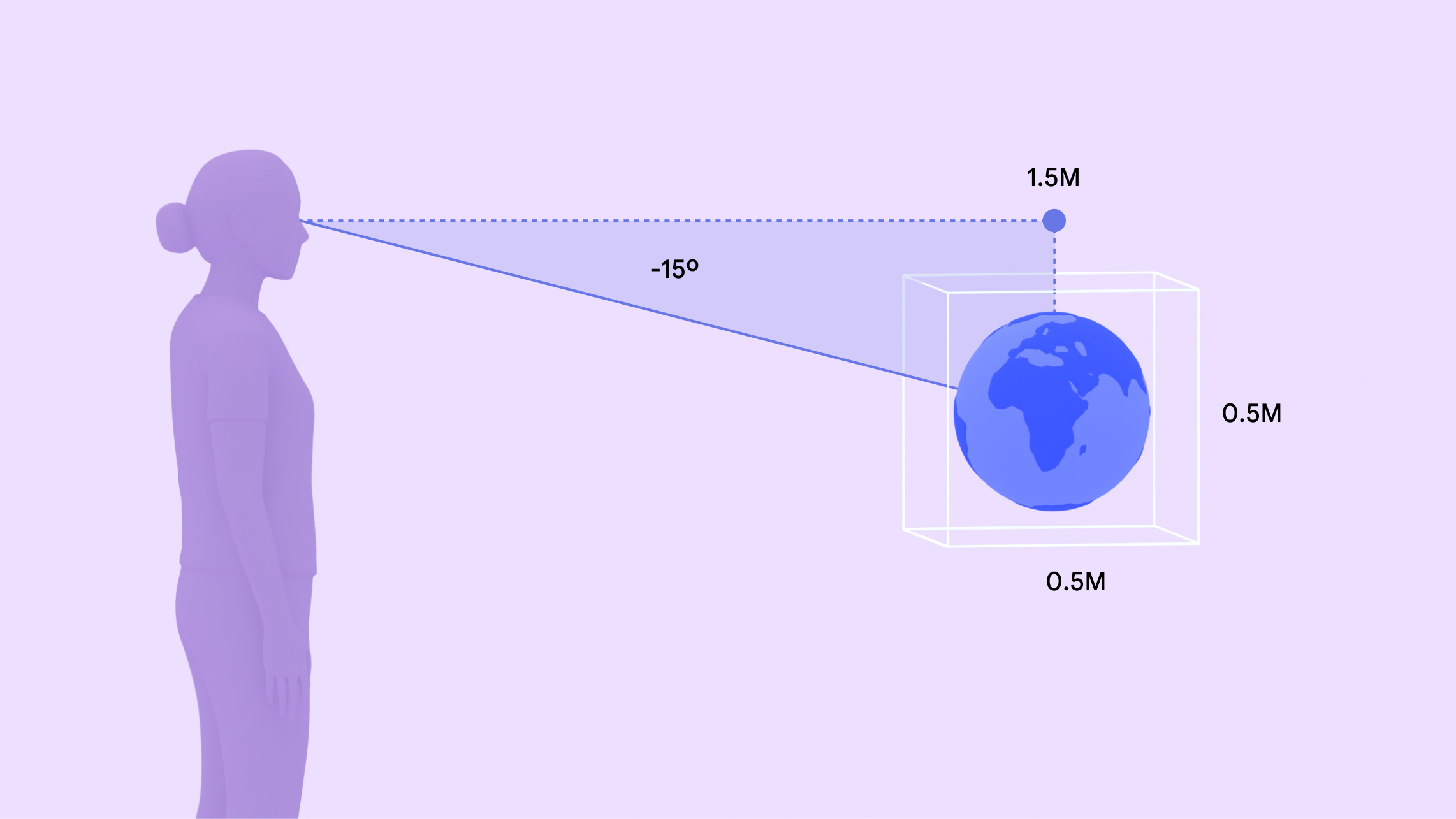في Android XR، النماذج الثلاثية الأبعاد هي عناصر رقمية يتم عرضها بدرجة عمق وحجم معيّنين لإضافة لمسة من الواقعية والفهم المكاني إلى تطبيقك. ويمكن للمستخدمين التفاعل بشكل طبيعي مع النماذج الثلاثية الأبعاد، ما يخلق تجربة تحويلية وتفاعلية.
يتوافق نظام Android XR مع النماذج الثلاثية الأبعاد التي لها امتداد ملف .glTF أو .glb.
GL Transmission Format (glTF) هو تنسيق ملف ثلاثي الأبعاد عادي يقلل من حجم مواد العرض ويحمّلها بسرعة ويمكن تشغيله على جميع المنصات. يمكنك
تصدير تنسيقات الملفات هذه من أدوات إنشاء المحتوى الرقمي التابعة لجهات خارجية، مثل
Blender وMaya وSpline وغيرها.
لتحسين الأداء، امنح الأولوية لحجم الملفات الصغيرة. تجنَّب استخدام عدد كبير جدًا من المضلّعات أو استخدام مواد تركيبية عالية الدقة التي قد تؤثّر في سرعة العرض.
طُرق دمج النماذج الثلاثية الأبعاد
يوفّر Android XR أدوات مختلفة لإضافة نماذج ثلاثية الأبعاد تفاعلية في تطبيقك: باستخدام واجهتَي برمجة التطبيقات SceneCore API أو Scene Viewer. إذا كنت بصدد إنشاء محتوى باستخدام Compose for XR، يمكنك وضع النماذج الثلاثية الأبعاد بالنسبة إلى واجهة المستخدم باستخدام العنصر القابل للتجميع في مساحة فرعية للحجم.
- واجهات برمجة تطبيقات SceneCore يمكنك إنشاء تفاعلاتك الخاصة، بما في ذلك التدوير والنقل والتكبير/التصغير. يتيح ذلك للمستخدمين التفاعل مع النماذج الثلاثية الأبعاد إلى جانب لوحات وبيئة تطبيقك المكانية. يمكنك أيضًا إنشاء علاقات بين العناصر الرئيسية واللوحات والنماذج الثلاثية الأبعاد. التعرّف على واجهات برمجة تطبيقات SceneCore
- يمكن استخدام عارض المشهد لتحميل النماذج الثلاثية الأبعاد وعرضها مع التفاعلات، بما في ذلك التدوير والنقل والتكبير/التصغير. ومع ذلك، يتم تشغيل "عارض المَشاهد" كتطبيق منفصل. نتيجةً لذلك، لن يتمكّن المستخدمون من رؤية لوحات تطبيقك و بيئته أثناء التفاعل مع النماذج الثلاثية الأبعاد. مزيد من المعلومات عن ميزة "عارض المشهد"
واجهات برمجة تطبيقات SceneCore
باستخدام واجهات برمجة التطبيقات SceneCore، يمكنك تطوير تفاعلات غنية للنماذج الثلاثية الأبعاد مع إبقاء المستخدمين في سياق تطبيقك. بما أنّ SceneCore تتيح لك مواصلة عرض التصاميم والبيئات إلى جانب النماذج الثلاثية الأبعاد، يمكنك إنشاء علاقات بين النماذج الثلاثية الأبعاد والتصاميم، واستخدام ميزة "إدراك المشهد" لتثبيت المحتوى في المساحة المادية للمستخدم.
باستخدام SceneCore، يمكنك أيضًا إضافة ما يلي:
- التعليقات التوضيحية للتصاميم الثلاثية الأبعاد
- تشغيل الصور المتحركة المضمّنة في النماذج الثلاثية الأبعاد
- تصاميم ثلاثية الأبعاد متعددة
- قائمة مخصّصة ومواقع إطلاق
العلاقات
يمكن أن ترتبط النماذج الثلاثية الأبعاد بعلاقات رئيسية مع الألواح أو النماذج الثلاثية الأبعاد الأخرى، بحيث يلي العنصر الثانوي حركة العنصر الرئيسي.
علامات الإقحام
يمكن للمستخدمين تثبيت النماذج الثلاثية الأبعاد في نقطة معيّنة في العالم الواقعي. يمكنك إضافة نقاط تثبيت إلى مساحات أفقية أو عمودية عامة أو مساحات معيّنة، مثل الأرضية أو الحائط.
Scene Viewer
تسمح ميزة "عارض المشهد" للمستخدمين بالاطّلاع على النماذج الثلاثية الأبعاد والتفاعل معها. يمكن للمستخدمين فتح نماذج ثلاثية الأبعاد متوافقة بتنسيق glTF ( .gltf)، مثل ملف glb ( .glb)، ووضع العناصر في المساحة. يمكنك دمج أداة عرض المحتوى الثلاثي الأبعاد في تطبيقك لتسهيل استخدام ميزة عرض المنتجات واستكشاف المحتوى التعليمي والاطّلاع على النماذج الثلاثية الأبعاد. يوفّر "عارض المشهد" واجهة مستخدم مدمجة للتفاعلات الأساسية، بما في ذلك التنقّل والدوران والتكبير والربط.
موضع الإطلاق
يتم عرض النماذج الثلاثية الأبعاد على مسافة 1.5 متر و15 درجة تحت خط نظر المستخدم، في مركز مجال رؤيته. يتم فتحها بحجم مصغّر يبلغ 1.5 متر لكل محور.

تشمل التفاعلات ما يلي:
واجهة المستخدم والتفاعلات التي تسمح للمستخدمين بتحريك نماذج 3D وإدارتها وتثبيتها وتغيير حجمها باستخدام إيماءات طبيعية
قائمة التفاعلات
يمكن تخصيص قائمة النماذج الثلاثية الأبعاد باستخدام إجراءات إضافية. إذا كان ملف glTF يحتوي على أحجام مختلفة، مثل الحجم المقترَح والحجم الفعلي، يتيح الزر 1:1 للمستخدمين التبديل بينهما بسرعة. للخروج من عرض النموذج الثلاثي الأبعاد والعودة إلى التطبيق، يمكن للمستخدمين النقر على زر الإغلاق الإلزامي.


